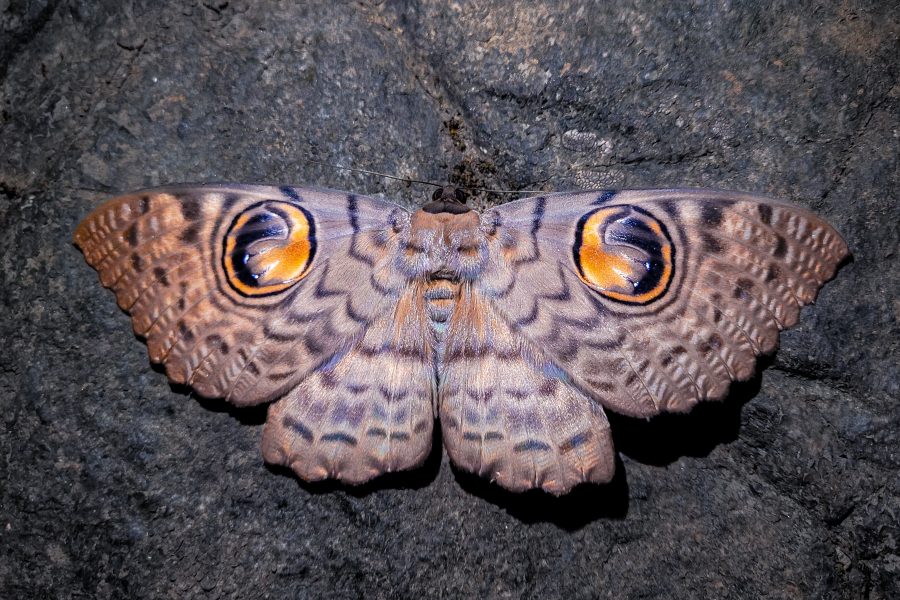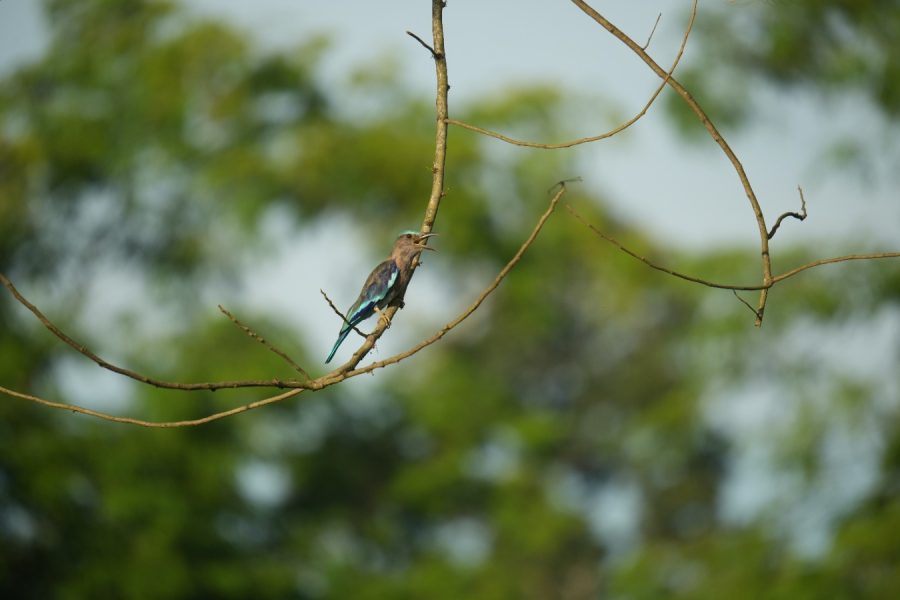Most of us in our day to day life walk past a tree without giving it a second thought. Botanists have called this tendency “Tree Blindness”, highlighting how we could be suffering from ignorance. When we do give the greens some thought, our thinking is often limited to aesthetics or a tree’s ability to provide shade. Sometimes, especially when pollution levels rise, we tend to recall and appreciate trees as one of the sources of the oxygen we breathe.
But rarely does one worry about which of them bear fruits that are safe to consume, and we often fail to recognise that every tree that is cut is a lifeline to countless lifeforms. Unlike our ancestors, who were intimately aware of the native trees and the support they gave to diverse living beings, every next generation seems to be elongating their distance from nature.
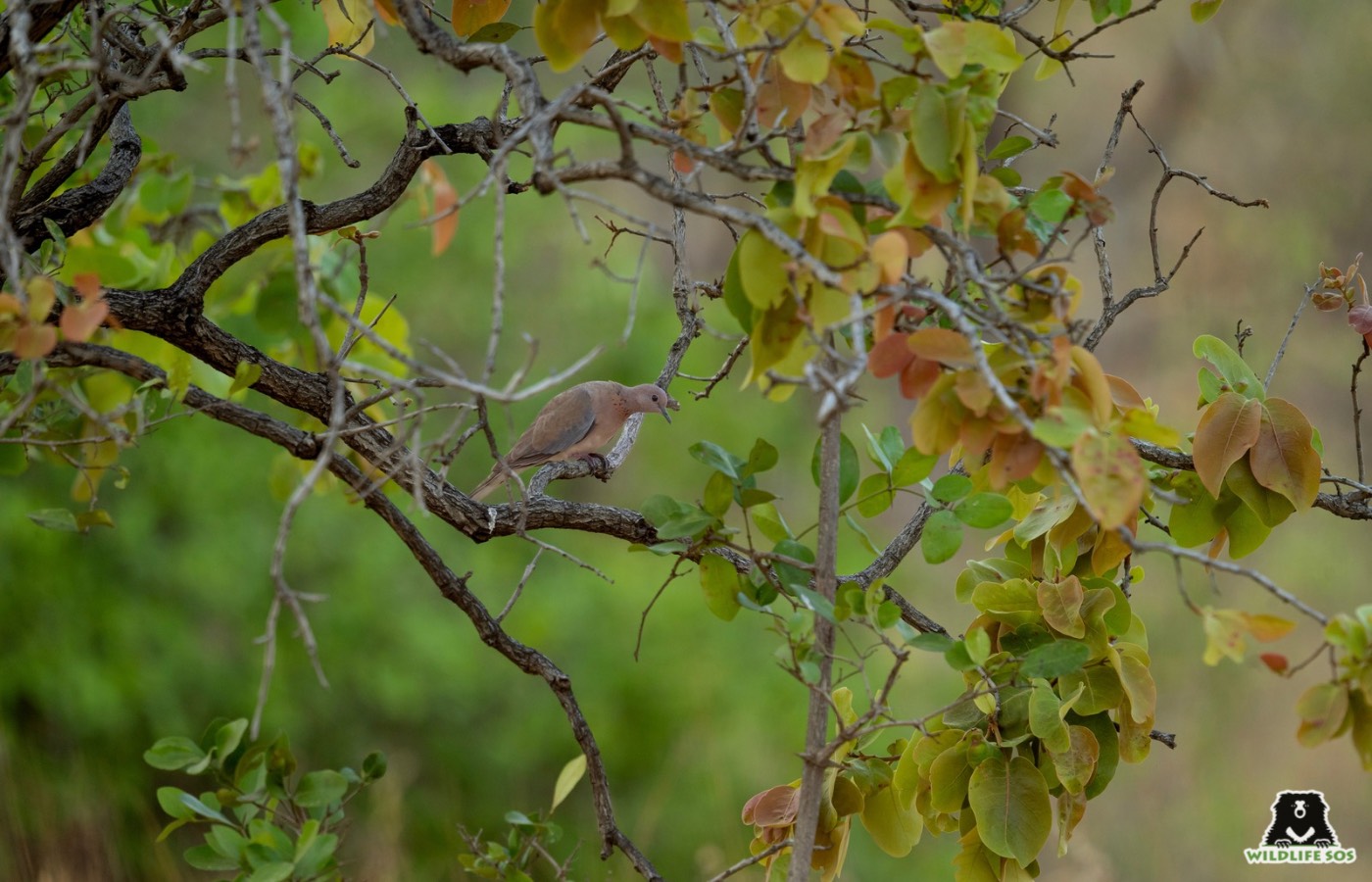
The importance of trees can be seen etched across different religions of the world in the form of the ‘sacred tree’ or the ‘Tree of Life’. Trees continue to be a major part of many traditions, mythological tales, folklore and philosophical ideas. The tree motif is a powerful symbol throughout many different global art forms.
In India, the Tree of Life is a concept that can be found depicted in indigenous art forms of Phad, Rogan, Gond, Sohrai, Madhubani and Kalamkari along with animals and other elements of nature. The tree can commonly be seen in handwoven fabrics like Banarasi, Chanderi, and Jamdani, where motifs depict themes of interdependence and interconnectedness of life forms. Harmony and nourishment are symbolised through a tree’s flowers, leaves, fruits that animals feed on, branches on which birds perch, roots digging deep and expanding widely in the soil, and so on.
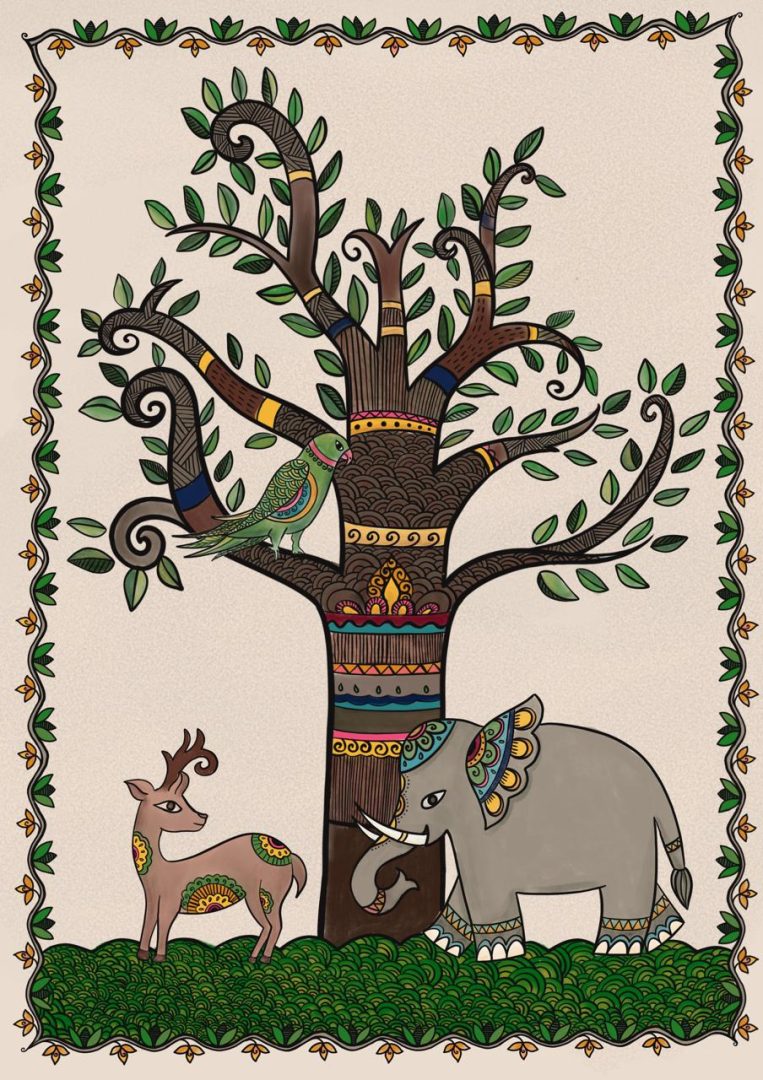
The Life on the Trees
Trees have been around for nearly 400 million years, and countless life forms have evolved alongside them. Many species of birds, insects, reptiles and mammals such as rodents, primates and felines, all derive sustenance from trees. The fruits and the flowers growing on the trees are a source of nutrition for many of these species. Many depend on thick foliage to have a safe place to live and sleep, away from predators, which prevents them from being hunted. During summers, trees shield many species, including humans, from the hot sun.
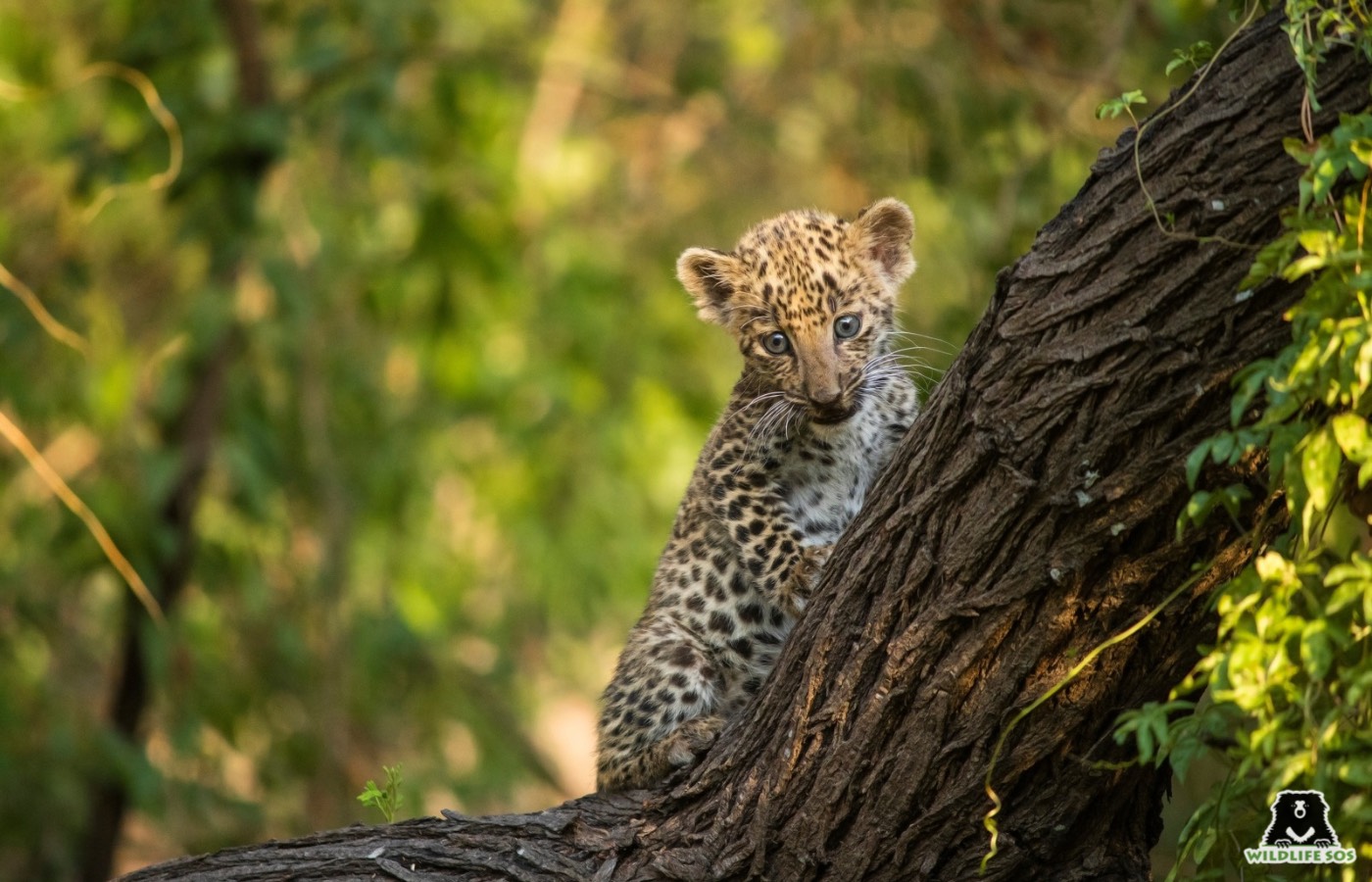
The avians use the branches of trees, hollows in barks, twigs and even leaves for roosting or to make their nests and raise their young ones. Trees provide habitat to species of the forests as well as those that have adapted to urban areas, which include squirrels, bats, and monkeys. Reptiles such as snakes and lizards including chameleons, also claim branches or holes of tree trunks.
Insects such as bees, spiders and caterpillars find suitable homes in the trees. Some insect species are in fact known to have a symbiotic relationship with the trees. The acacia trees, for example, have specialised structures that can shelter and feed ant colonies, and in return, these ants defend the tree from being eaten by herbivores.
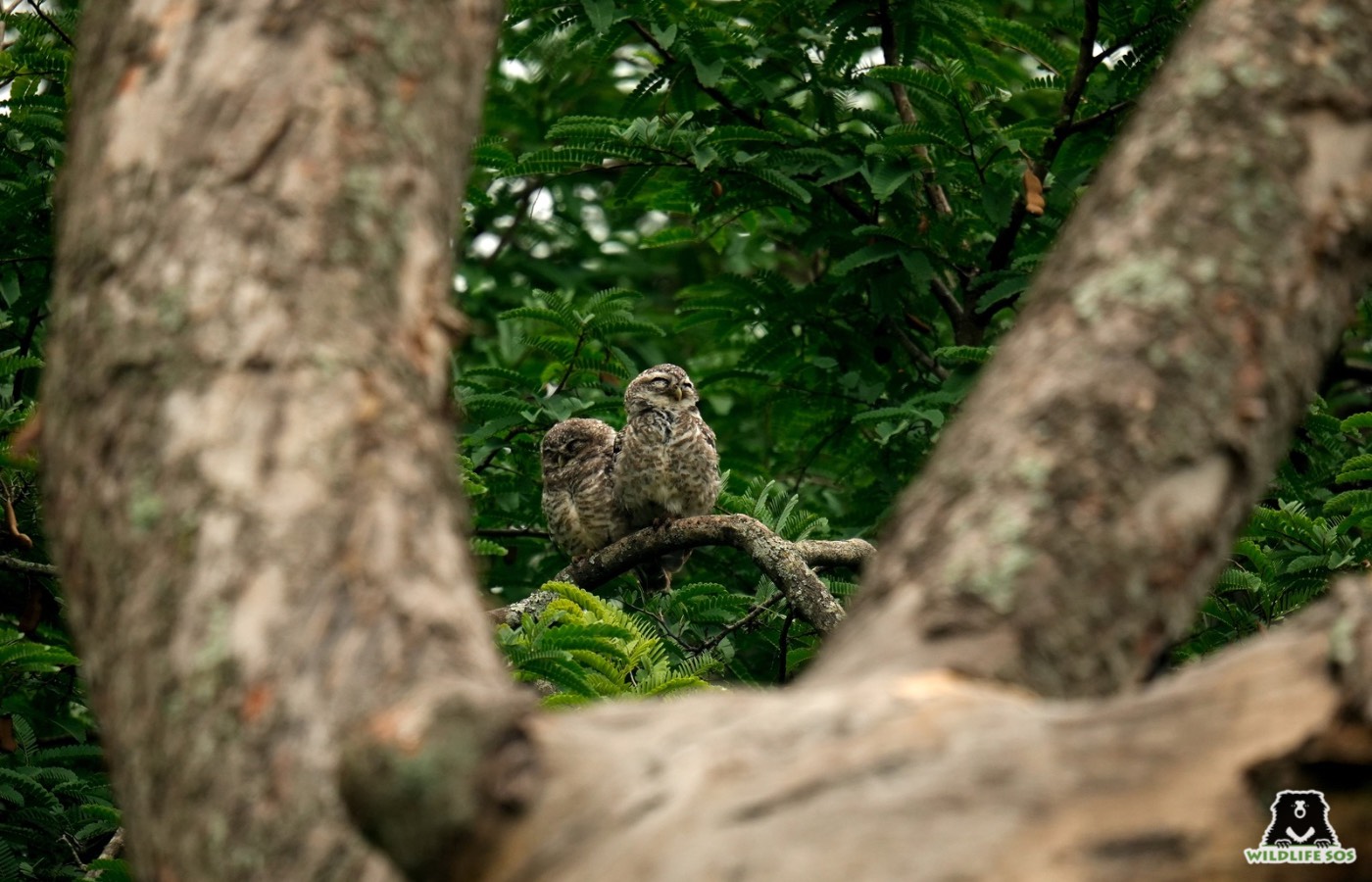
Life after Death
Trees take hundreds of years to decay and as they decay, they continue to provide food, protection, habitation and nutrition to wildlife. Dead trees, known as snags, that are left upright to decompose naturally, continue to serve their hollow cavities as home or protection to species of birds, squirrels, and bats. Mosses, lichens and fungi grow on snags and aid in returning vital nutrients to the soil through the nitrogen cycle. These snags also serve as excellent look-outs for raptors to spot potential prey.
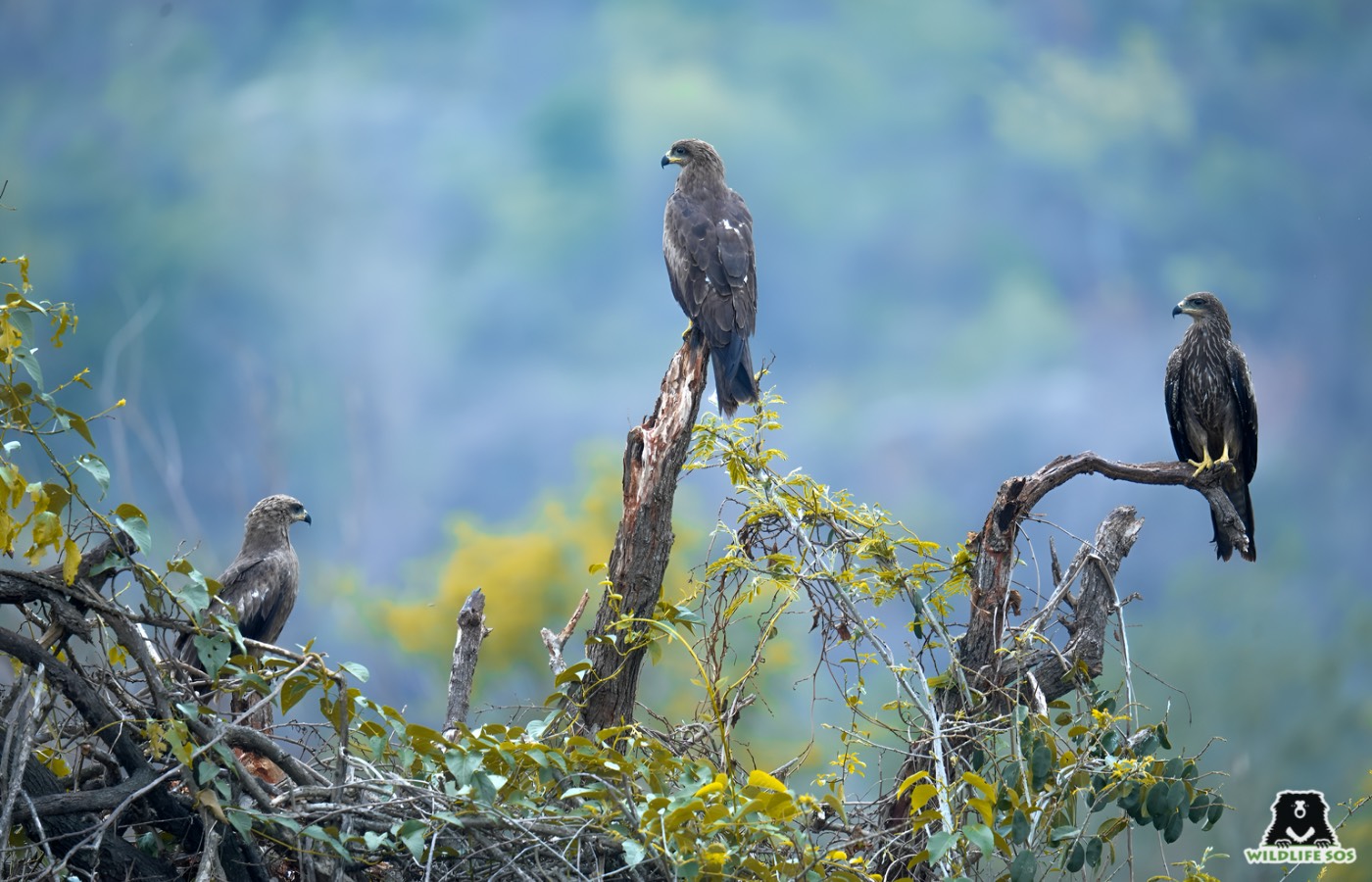
When the snags or parts of the snags, fall on the ground, it is known as a log and continues to be very useful for the wildlife habitat and the growth of new seedlings. The decaying logs on the forest floor often act as “nurse logs” for new seedlings by offering them shade, nutrients, water and protection from disease and pathogens. As the log decays further, it nourishes the ground to support new plants, insects, fungi, and more.
‘The Hidden Life of Trees’
What can possibly make trees even more fascinating? It is the fact that they are able to silently ‘speak’ to each other via smell, taste and even electrical pulses. As we continue to explore non-human communication, Peter Wohlleben, in his book Hidden Life of Trees, dives into how trees can communicate through an underground network of fungi.
This network, composed of mycelia (thin threads of fungi), connects the roots of one tree to another, allowing exchange of water, nutrients and even significant information. For example, if a tree sends out a distress signal, the neighbouring trees receive the message and send back nutrients through the linked fungi. The author dubbed this extraordinary underground system as the “wood wide web”!
We Need to Cure our ‘Tree Blindness’
Currently, at least 34% of the world’s trees are at the risk of extinction. In India, out of the 387 plants listed under The International Union for Conservation of Nature (IUCN) Red List, 77 are ‘Critically Endangered’ and six are ‘Extinct’. Two in the list are ‘Extinct in the Wild’, which means that while they no longer exist naturally, they are being kept alive in man-made environments such as nurseries or zoos.
Trees are not only essential for local biodiversity and wildlife, but together they create forests and play a crucial role in combating the effects of global warming and climate change. They act as carbon sinks, absorbing more carbon dioxide through photosynthesis than they release to the atmosphere.
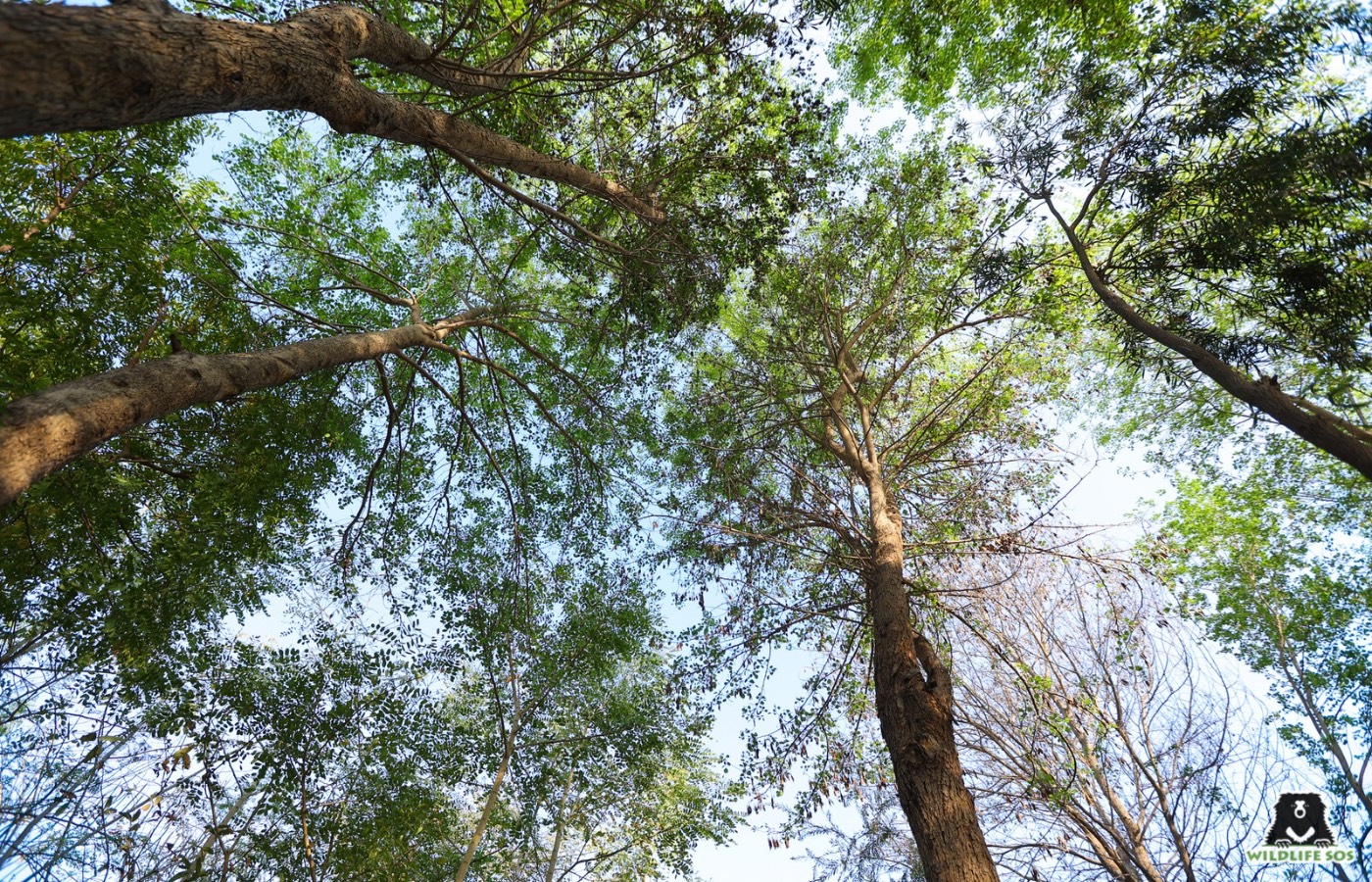
So, next time when walking past a tree, do take a minute (or more) to give attention to the microcosm of life that depends on it. Observe how beautifully trees change with every season. And remember to not forget how vital they are to a healthy ecosystem!
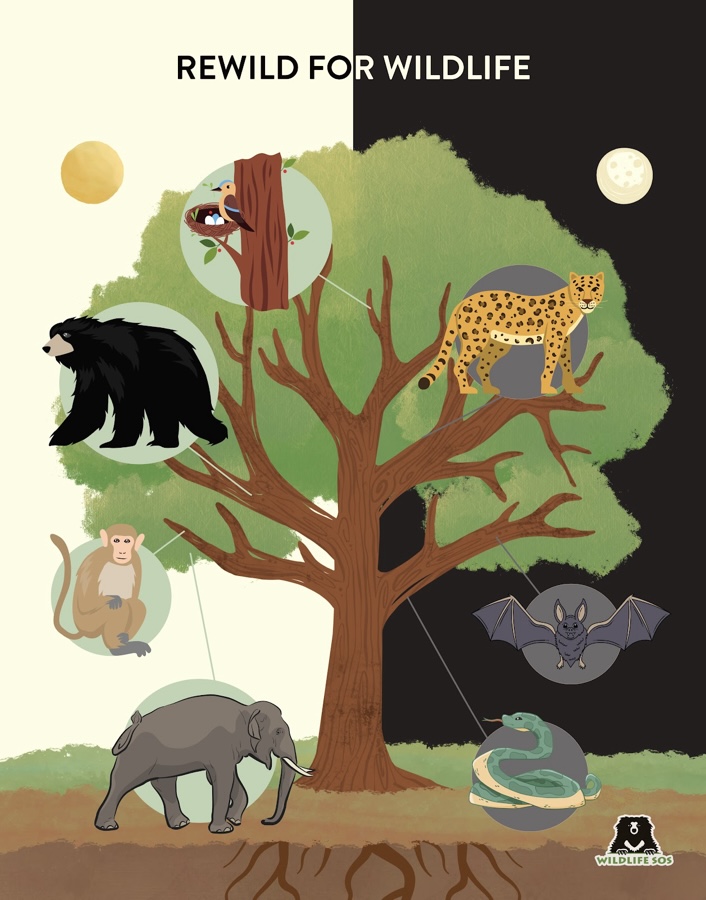
‘Rewild for Wildlife’ Initiative by Wildlife SOS
As a dedicated conservation initiative, Wildlife SOS has launched the Rewild for Wildlife project at three poignant locations. These aim to reforest the regions with native trees, which in turn would rebuild habitats of wildlife that depend on them.
Ramdurga Valley in Karnataka
In Ramdurga Valley, a diligent team from Wildlife SOS and members of the local community came together to plant over 10,000 carefully selected saplings. The project began in 2006, and within three years, an impressive 90% plant survival rate was achieved. As a result, arid land that was once desolate, transformed into a lush landscape! Reviving the valley with abundant trees also resulted in the remarkable resurgence of wildlife.
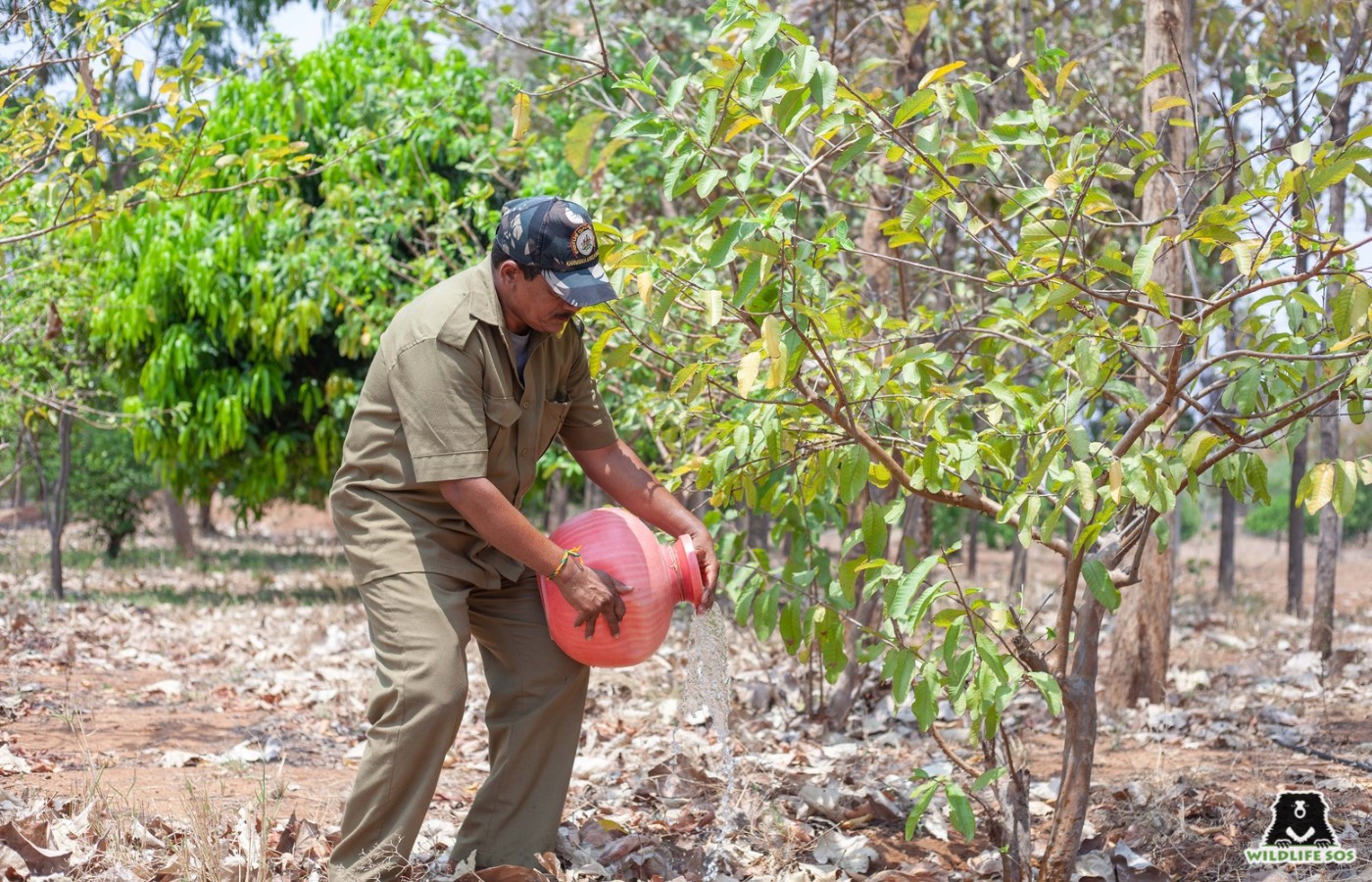
Elephant Conservation and Care Centre (ECCC) in Mathura
The ECCC is home to our rescued elephants, also proudly known as “nature’s gardeners”! To recreate an environment for them that is as close to the wild as possible, numerous indigenous trees were planted. While this step was taken by caregivers, it is the elephants who have truly nurtured and sustained the land. They have, in fact, added to the tree count — by dispersing undigested seeds through their soil-enriching dung. Often, plants can be seen growing directly from the dung piles! That they are a keystone species is now evident as they are bringing back wild life at ECCC.
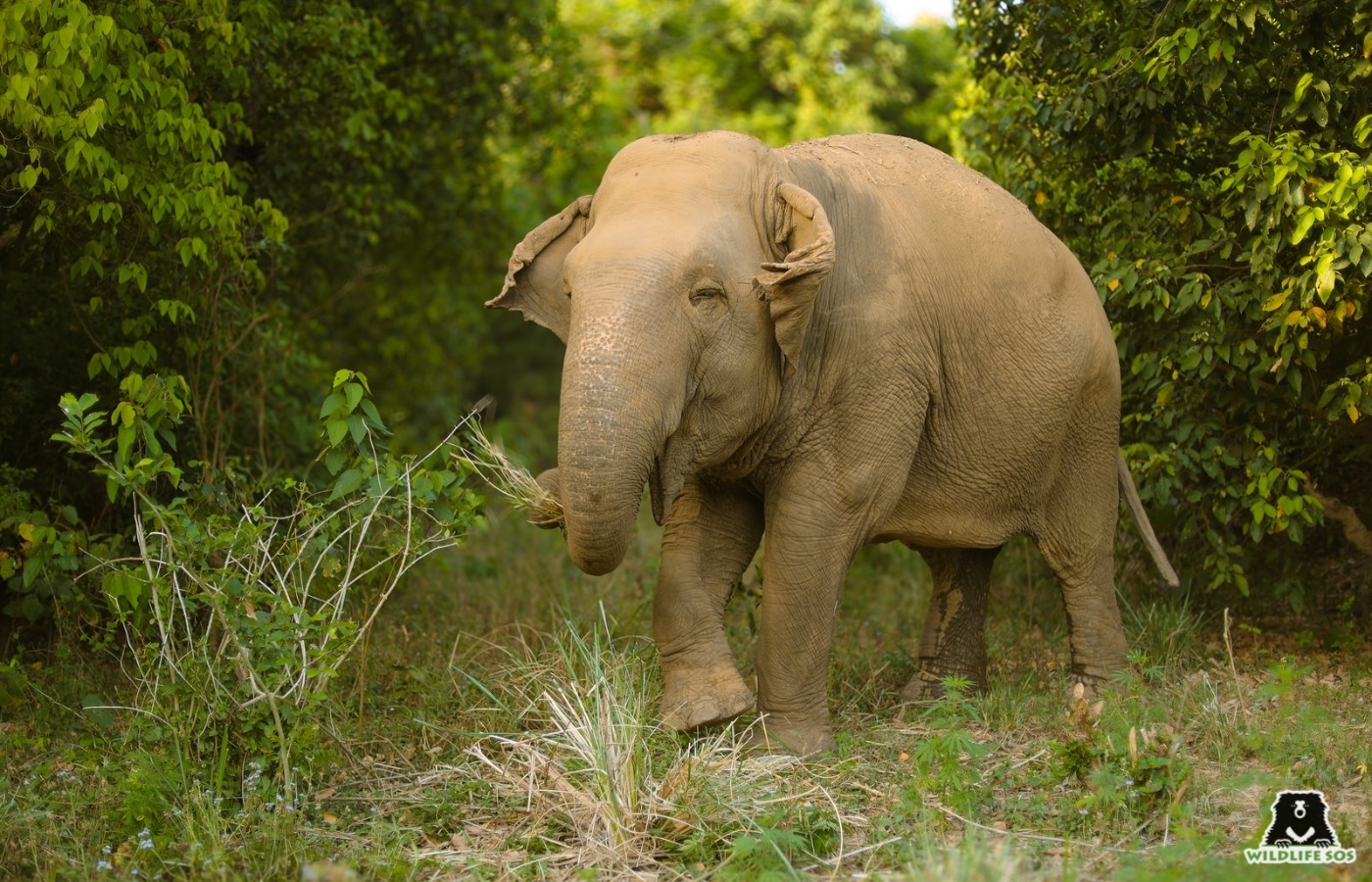
Agra Bear Rescue Facility in Agra (ABRF)
At ABRF, our rescued sloth bears, despite being traumatised by the horrors of their past, continue to be inquisitive and are often seen actively exploring their surroundings. Planting of trees has played a crucial role in helping the bears heal both physically and mentally. It creates an environment akin to the wild so that rescued bears can refine their inherent instincts and carry out their natural behaviour.
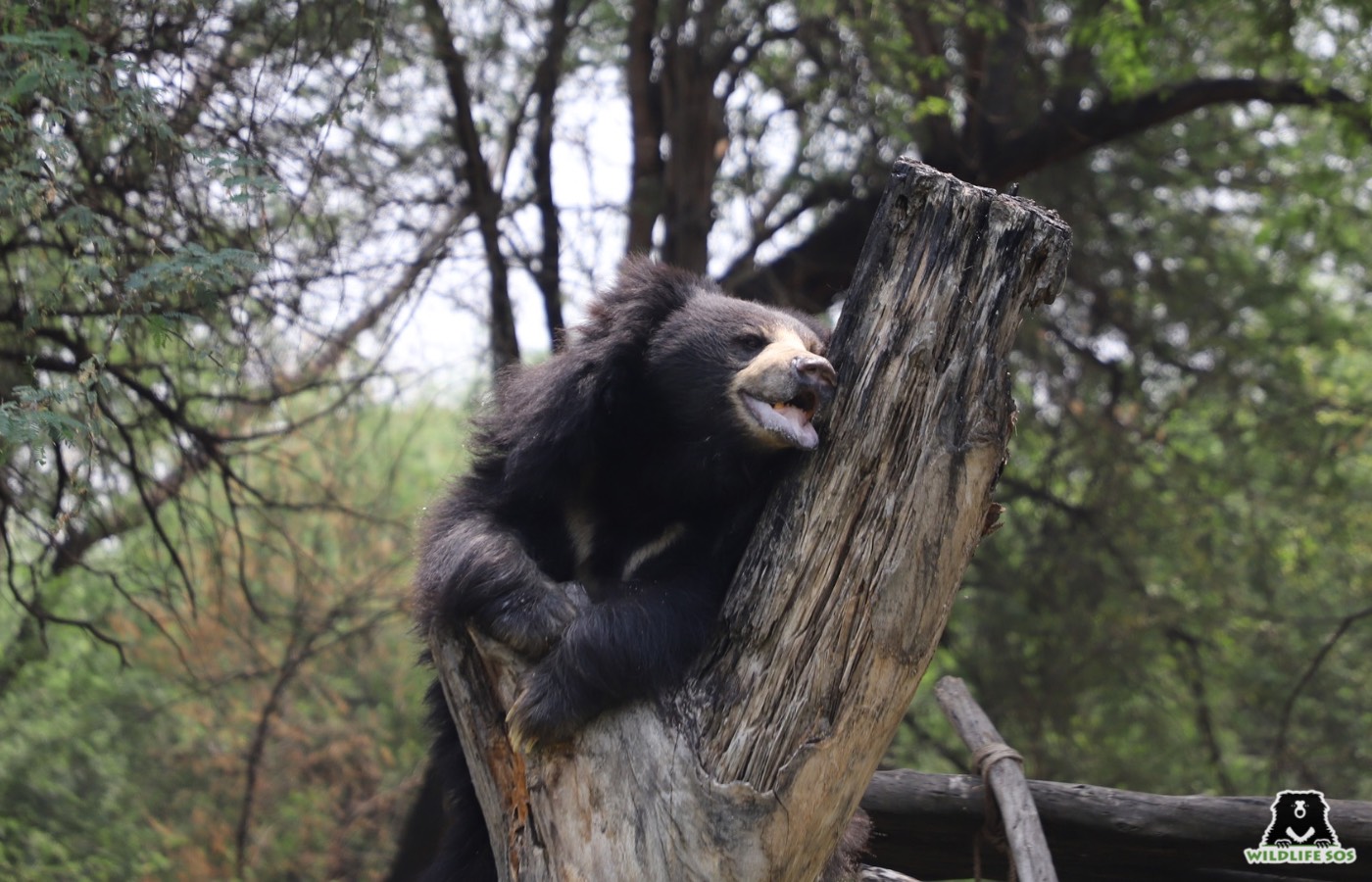
Every donation to the Rewild for Wildlife project directly contributes to planting trees at these centres, creating habitats for wildlife and our resident animals. Your support can help restore biodiversity as well as preserve the native tree species. Click here to contribute towards our tree plantation projects!


